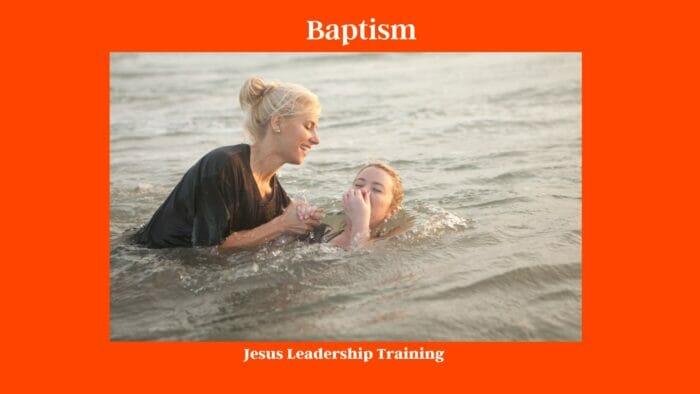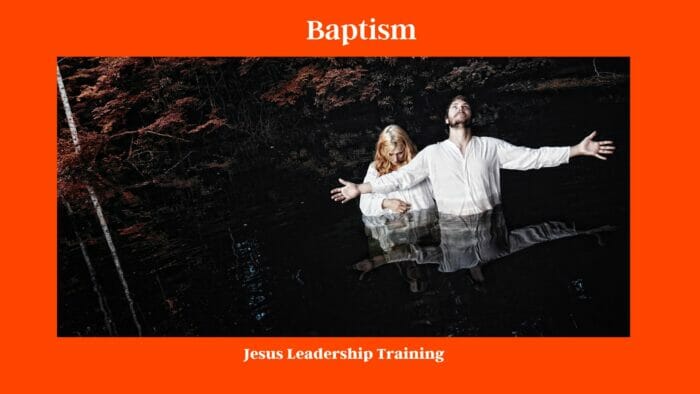Discover the profound significance of baptism in various religious traditions, its historical roots, and its multiple forms. Learn about the biblical definition of baptism and the reasons why it holds immense importance for believers. This comprehensive article explores the topic of baptism, including its role in the Catholic Church, various types of baptism, and whether it is specific to Catholicism or universal to Christianity. Gain valuable insights from an authoritative and informative perspective.
Table of Contents
What is Baptism
Baptism is a sacred and symbolic ritual practiced in various religious traditions worldwide. It involves the ceremonial act of cleansing or purifying an individual as a sign of spiritual rebirth, purification, and initiation into the faith. This act is often accompanied by prayers, blessings, and the use of water, which is considered a powerful symbol of renewal and transformation.
Biblical Definition of Baptism
In the Christian tradition, baptism holds a central place as an essential sacrament. It is deeply rooted in the teachings of the Bible, specifically the New Testament. According to the Bible, baptism is an act of obedience to God’s command and serves as a public declaration of one’s faith in Jesus Christ.

Baptism in Water
Water baptism, as mentioned in the New Testament, symbolizes the believer’s identification with the death, burial, and resurrection of Jesus Christ. It signifies the washing away of sin and the beginning of a new life in Christ.

Baptism by Fire
While water baptism represents the cleansing aspect, baptism by fire, as mentioned in the scriptures, symbolizes the transformative and empowering work of the Holy Spirit in the life of a believer.
Baptism of the Holy Spirit
The baptism of the Holy Spirit refers to a distinct experience where believers are filled with the Holy Spirit’s power, enabling them to live a more empowered and fruitful Christian life.
3 Reasons Why Baptism is Important
Baptism holds immense significance for individuals who choose to follow the path of faith. Here are three key reasons why baptism is considered essential:
Obedience
Baptism represents obedience to God’s Word. It is an outward expression of an inward commitment to follow Christ and live according to His teachings.
Profess
Through baptism, individuals publicly profess their faith in Jesus Christ and acknowledge Him as their Lord and Savior.
Commit

Baptism symbolizes a commitment to a life of spiritual growth and transformation. It serves as a reminder of the believer’s dedication to living in accordance with their faith.
History of Baptism in the Catholic Church
The Catholic Church has a rich history of baptism that dates back to ancient times. The evolution of baptism within the Catholic tradition can be understood through the following stages:
Jewish Baptism
The roots of Christian baptism can be traced back to Jewish purification rituals. These practices laid the foundation for the concept of baptism in Christianity.
First Century Baptism
In the early Christian church, baptism was a significant rite of passage for new converts. It was often performed through full immersion in water.
Origin of Sprinkling
Over time, the mode of baptism evolved, and the practice of sprinkling or pouring water over the head of the individual became more common, especially in cases of infant baptism.
Traditions Today
Today, the Catholic Church practices both infant and adult baptism, with variations in liturgy and symbolism across different regions and communities.

4 Types of Baptism
Baptism can take various forms, each carrying its own unique significance. The four primary types of baptism are as follows:
Total Submersion
Total submersion involves immersing the individual completely in water, symbolizing the death, burial, and resurrection of Jesus Christ.
Partial Immersion
Partial immersion, also known as affusion, involves pouring or sprinkling water over the head of the person being baptized.
Aspersion
Aspersion is a form of baptism where water is lightly sprinkled on the person, symbolizing spiritual cleansing and rebirth.
Sprinkling
Similar to aspersion, sprinkling is a baptismal method where water is sprinkled over the individual, representing purification and new beginnings.
Is Baptism Catholic or Christian?
The practice of baptism is not limited to the Catholic Church alone but is an integral part of the broader Christian faith. However, different denominations within Christianity may have varying perspectives on baptism.
Christening
The term “Christening” is commonly associated with infant baptism in some Christian traditions. It is seen as a way of welcoming the child into the Christian community and seeking God’s blessings for their life.
Confirmation
Confirmation is a sacrament in which individuals, usually teenagers, reaffirm the promises made at their baptism and receive the gifts of the Holy Spirit.
Infants
While infant baptism is practiced in some Christian denominations, others practice “Believer’s Baptism,” where individuals choose to be baptized once they reach an age of understanding and profess their faith.
Age of Accountability
The concept of the “age of accountability” varies among different Christian groups and refers to the age at which individuals are considered responsible for their faith decisions.
Final Thoughts
Baptism, whether practiced in the Catholic Church or other Christian denominations, holds deep spiritual significance. It serves as a symbolic representation of cleansing, rebirth, and commitment to a life of faith. Understanding the biblical foundations and historical evolution of baptism provides a greater appreciation for its role in the lives of believers. As a timeless tradition, baptism continues to be a meaningful and transformative sacrament, uniting individuals with their faith and God’s eternal love.
FAQs
Q: Is baptism only practiced in the Catholic Church?
A: No, baptism is practiced in various Christian denominations and is considered an essential sacrament in the Christian faith.
Q: What does baptism symbolize in Christianity?
A: Baptism symbolizes the believer’s identification with the death, burial, and resurrection of Jesus Christ, signifying spiritual cleansing and initiation into the faith.
Q: What are the different types of baptism?
A: The four primary types of baptism are total submersion, partial immersion, aspersion, and sprinkling.
Q: At what age is baptism typically performed?
A: Baptism can be performed at any age, from infancy to adulthood, depending on the beliefs and practices of the religious community.
Q: What is the significance of baptism in the Catholic Church?
A: Baptism in the Catholic Church is a sacrament that welcomes individuals into the Christian community, initiating them into a life of faith and spiritual growth.
Q: Can individuals choose to be baptized as adults?
A: Yes, many individuals choose to be baptized as adults once they have a personal understanding of their faith and make a conscious decision to follow Christ.
Conclusion
Baptism, a sacred and ancient ritual, transcends religious boundaries and holds deep spiritual significance for believers across different traditions. It is a powerful symbol of renewal, transformation, and commitment to a life of faith. Understanding the biblical roots, historical evolution, and various forms of baptism enriches our appreciation for this meaningful sacrament. Whether practiced in the Catholic Church or other Christian denominations, baptism continues to inspire individuals on their journey of spiritual growth and communion with the divine.



